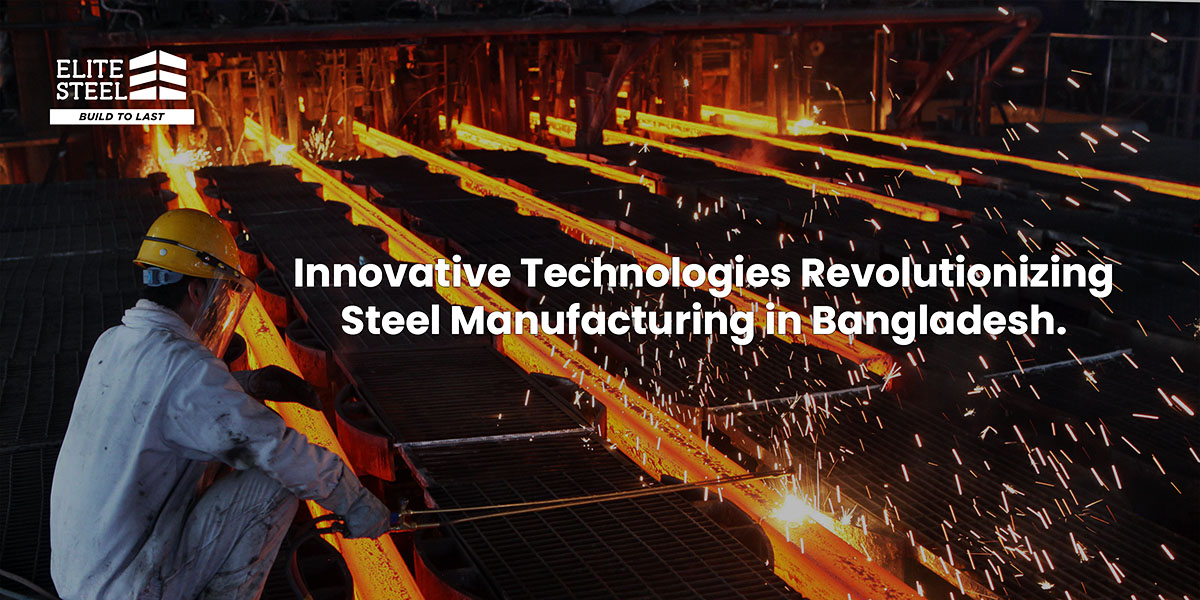Innovative Technologies Revolutionizing Steel Manufacturing in Bangladesh
Bangladesh, a rapidly developing nation, has been making significant strides in various industries, including steel manufacturing. The country’s burgeoning infrastructure projects, coupled with increasing industrialization, have fueled a growing demand for steel products. To meet this demand, Bangladeshi steel manufacturers are turning to innovative technologies to enhance efficiency, reduce costs, and improve product quality.
Advanced Steelmaking Processes
Electric Arc Furnace (EAF) Technology
EAFs have gained popularity in Bangladesh due to their flexibility and ability to handle a wide range of scrap materials. This technology reduces energy consumption and emissions compared to traditional blast furnaces.
- Enhanced Efficiency: EAFs offer superior energy efficiency compared to blast furnaces, resulting in lower operating costs.
- Flexibility: They can handle a wide range of scrap materials, making them adaptable to market fluctuations.
- Environmental Benefits: EAFs produce significantly lower greenhouse gas emissions, aligning with global sustainability goals.
Continuous Casting
This process involves casting molten steel into a continuous strand, resulting in higher quality products and reduced energy consumption. It’s a crucial technology for modern steel plants.
- Improved Quality: Continuous casting produces steel with a more consistent microstructure, leading to enhanced mechanical properties.
- Reduced Defects: The process minimizes the formation of defects like porosity and inclusions, ensuring higher product quality.
- Increased Productivity: Continuous casting enables higher production rates, meeting the growing demand for steel products.
Automation and Robotics
Automated Material Handling
Robotic systems are being deployed to handle heavy materials like scrap metal and finished products, improving safety and efficiency.
- Safety: Robotic systems reduce the risk of workplace injuries by handling heavy materials efficiently.
- Efficiency: Automation improves productivity by eliminating manual labor and reducing downtime.
- Precision: Robotic systems can perform tasks with greater accuracy and consistency than human operators.
Automated Quality Control
Advanced inspection systems, equipped with cameras and sensors, can detect defects in steel products, ensuring consistent quality.
- Real-time Inspection: Advanced inspection systems can detect defects in steel products immediately, preventing faulty products from entering the market.
- Data-Driven Quality Improvement: By analyzing inspection data, manufacturers can identify trends and take corrective actions to improve overall product quality.
Digitalization and Industry 4.0
Internet of Things (IoT)
Sensors and data analytics are being used to monitor production processes, identify bottlenecks, and optimize operations.
- Real-time Monitoring: IoT sensors provide real-time data on production processes, enabling manufacturers to identify and address issues promptly.
- Predictive Analytics: By analyzing IoT data, manufacturers can predict equipment failures and schedule maintenance proactively, reducing downtime and costs.
- Optimized Operations: IoT-enabled systems can optimize production processes, improve energy efficiency, and reduce waste.
Predictive Maintenance
By analyzing data from machines, manufacturers can predict equipment failures and schedule maintenance proactively, reducing downtime.
- Extended Equipment Lifespan: By predicting equipment failures, manufacturers can take preventive measures to extend the lifespan of their machinery.
- Reduced Downtime: Planned maintenance can minimize unplanned downtime, ensuring uninterrupted production.
- Cost Savings: Predictive maintenance can help reduce maintenance costs by preventing catastrophic failures.
Supply Chain Management
Digital technologies are improving supply chain visibility, enabling better inventory management and reducing lead times.
- Improved Visibility: Digital technologies provide real-time visibility into the supply chain, enabling better inventory management and just-in-time deliveries.
- Reduced Lead Times: By streamlining supply chain processes, manufacturers can reduce lead times and improve customer satisfaction.
- Cost Optimization: Digital tools can help optimize transportation routes, inventory levels, and procurement processes to reduce costs.
Sustainable Steel Production
Energy Efficiency
Technologies like electric arc furnaces and continuous casting are helping steel manufacturers reduce their carbon footprint.
- Renewable Energy Integration: Steel manufacturers are exploring the integration of renewable energy sources, such as solar and wind power, to reduce their carbon footprint.
- Energy-Efficient Technologies: Advanced technologies like electric arc furnaces and continuous casting are helping to optimize energy consumption.
Waste Reduction
Recycling and scrap utilization are becoming more prevalent, minimizing waste and conserving resources.
- Recycling: Recycling scrap steel is a crucial strategy for reducing waste and conserving resources.
- Waste Management: Implementing efficient waste management practices can minimize environmental impact and reduce costs.
Emission Control
Advanced pollution control equipment is being installed to reduce emissions and comply with environmental regulations.
- Advanced Pollution Control Equipment: High-efficiency pollution control systems are being installed to reduce emissions of harmful substances.
- Environmental Compliance: Steel manufacturers are striving to comply with stringent environmental regulations and standards.
Emerging Technologies
Additive Manufacturing
- Customization: 3D printing allows for the production of custom-designed steel components with complex geometries.
- Rapid Prototyping: Additive manufacturing can accelerate product development by enabling rapid prototyping of new designs.
- Reduced Material Waste: 3D printing can minimize material waste by producing only the necessary parts.
Smart Manufacturing
- Artificial Intelligence (AI): AI can be used to optimize production processes, improve quality control, and enhance decision-making.
- Machine Learning: Machine learning algorithms can analyze vast amounts of data to identify patterns and trends, enabling manufacturers to make data-driven decisions.
Conclusion
The adoption of innovative technologies is transforming the steel manufacturing landscape in Bangladesh. By embracing these advancements, the country’s steel industry is poised to become more competitive, sustainable, and capable of meeting the growing domestic and international demand for high-quality steel products. As Bangladesh continues to develop, these technologies will play a vital role in shaping its industrial future.


